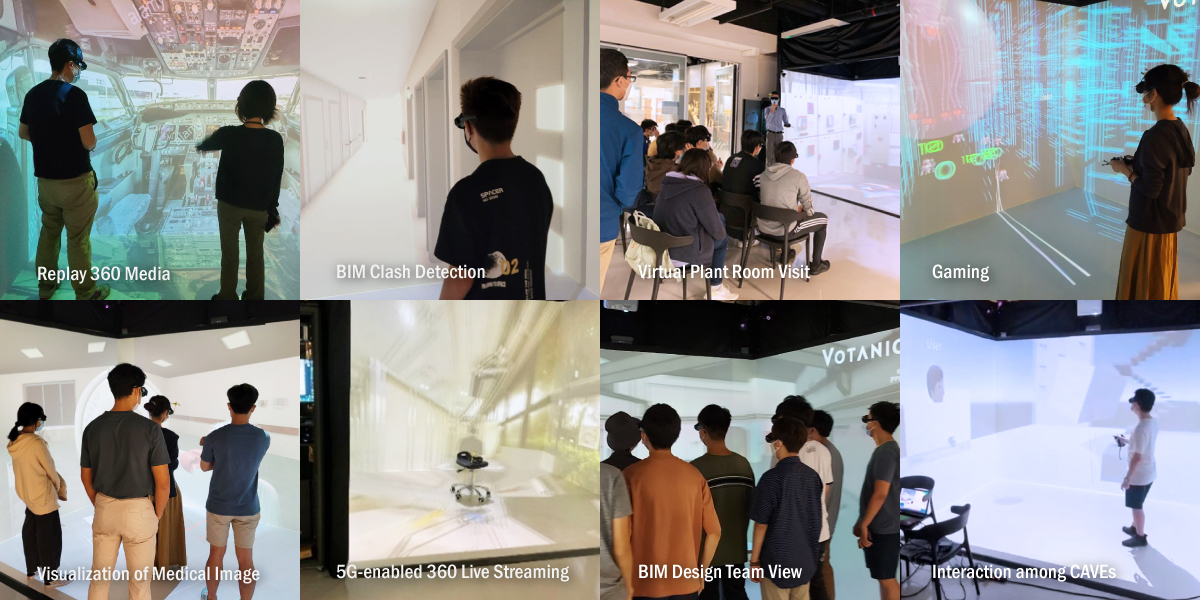Facilities
| Item | Type | Location | Contact Person | Availability |
|---|---|---|---|---|
Hardware |
U301(IC) |
Ir Dr WONG Ka-fai Kevin | Available |
|
Hardware |
U202 (IC) |
Ir Dr WONG Ka-fai Kevin |
Available |
|
CAVE System (4-sided) |
Hardware |
Z216 (APSS) |
Coming soon |
|
| CAVE System (3-sided) | Hardware |
P504 (COMP) |
Coming soon | |
| CAVE System (4-sided) | Hardware |
ST402 (RS) |
Coming soon | |
| Hardware |
U301 (IC) |
CHIM Yick-yu Jim |
Available |
|
| Hardware |
U301 (IC) |
CHIM Yick-yu Jim |
Available |
|
Digital Video Production Studio |
Facility |
APSS |
Coming soon |
|
Interactive 360 Video Content Creator (CAVE) |
Software |
U301 (IC) |
LOK Wai-hang Raymond |
Coming soon |
360 Live Video Streaming (CAVE) |
Software |
U301 (IC) |
CHIM Yick-yu Jim |
Coming soon |
Software |
U301 (IC) | LOK Wai-hang Raymond |
Available |
|
Software |
U301 (IC) | LOK Wai-hang Raymond |
Available |
|
Software |
U301 (IC) | LOK Wai-hang Raymond |
Available |
|
Dynamics 365 Remote Assist |
Software |
U301 (IC) | LOK Wai-hang Raymond |
Available |
DSI-VR300 System with HTC VIVE Pro Eye |
System & Software |
ISE |
Dr YM TANG |
Available |
Multiverse |
Software |
ISE |
Coming soon |
Available Facilities at IC
CAVE (Cave Automatic Virtual Environment)
Available Now
4-sided CAVE System@U301 (IC)
Available Now
6-sided CAVE System@U202 (IC)
Current Applications
BIM Clash Detection; BIM Design Team View; Virtual Plant Room Visit; 5G-enabled 360 Live Streaming; Reply 360 Media; Visualization of Medical Image; Interaction among CAVEs; Gaming
Portable Headset
Available Now
Microsoft HoloLens 2@U301 (IC)
HTC VIVE Pro 2@U301 (IC)
Current Applications
BIM Application Training; Safety PPE Training; Anatomy Class by D2P
Please put at least one valid content allocate to this component.
- W309e
- +852 2766 7634
- ka.fai.kevin.wong@polyu.edu.hk






